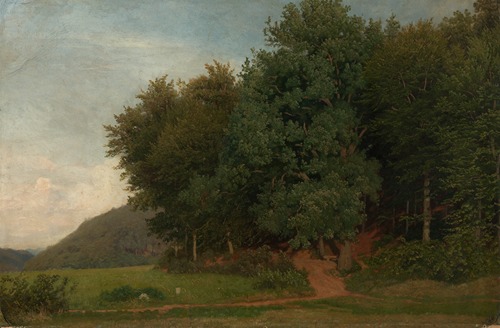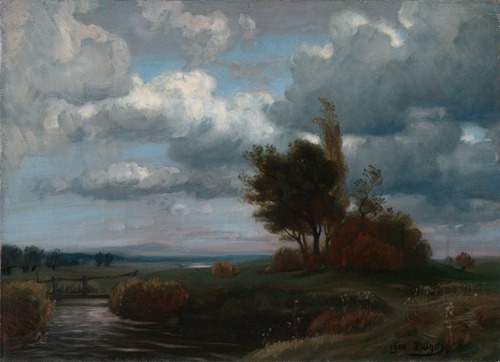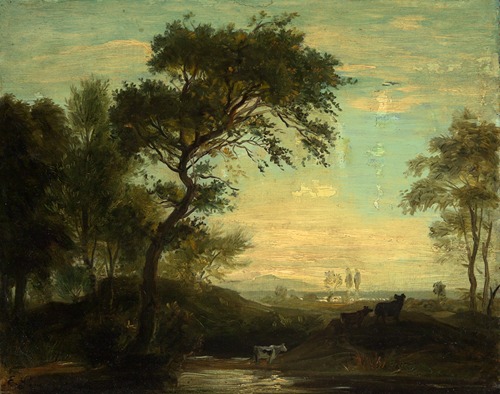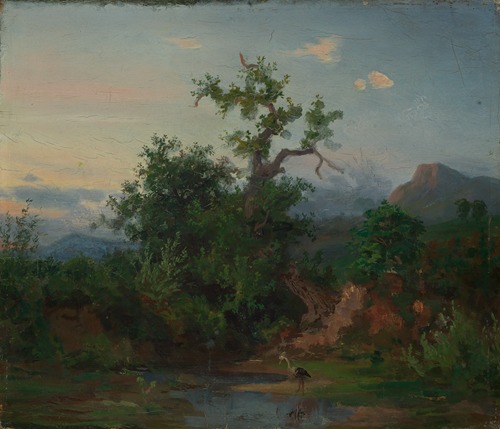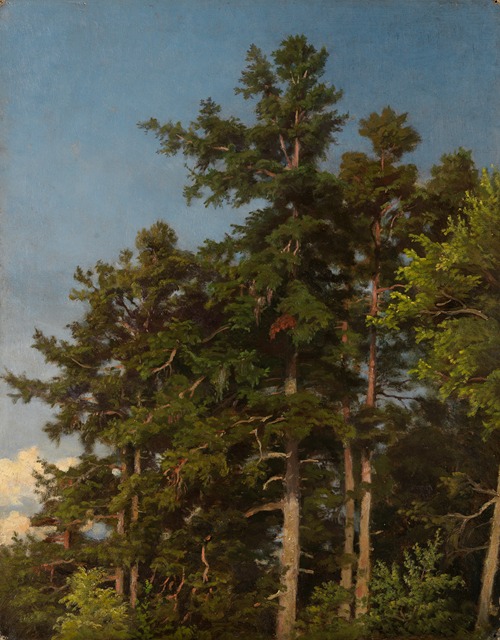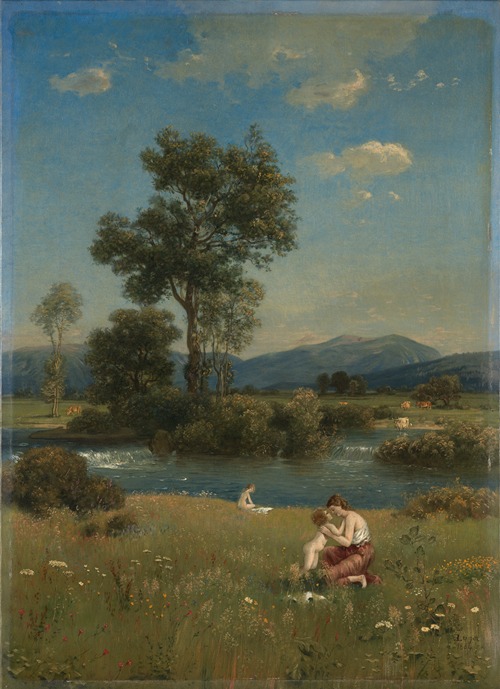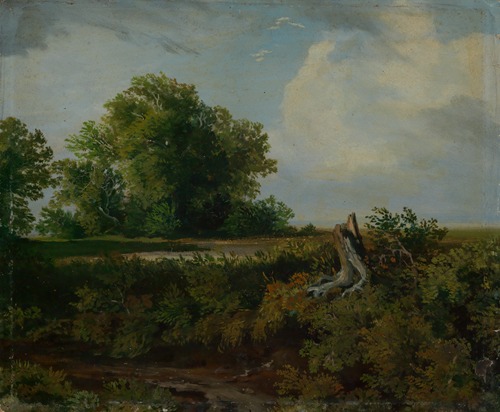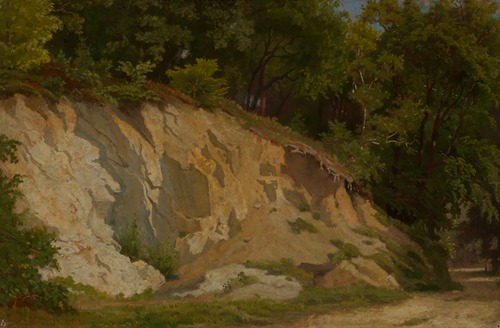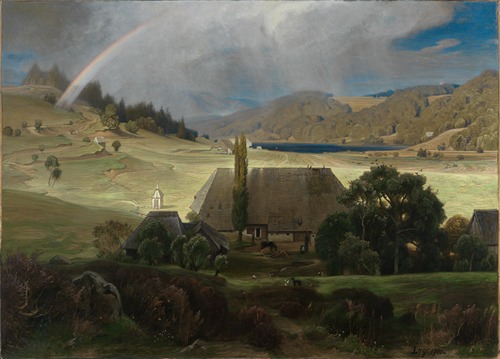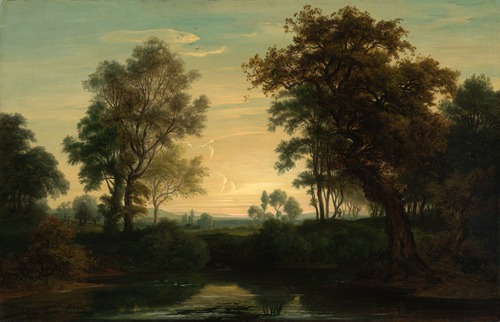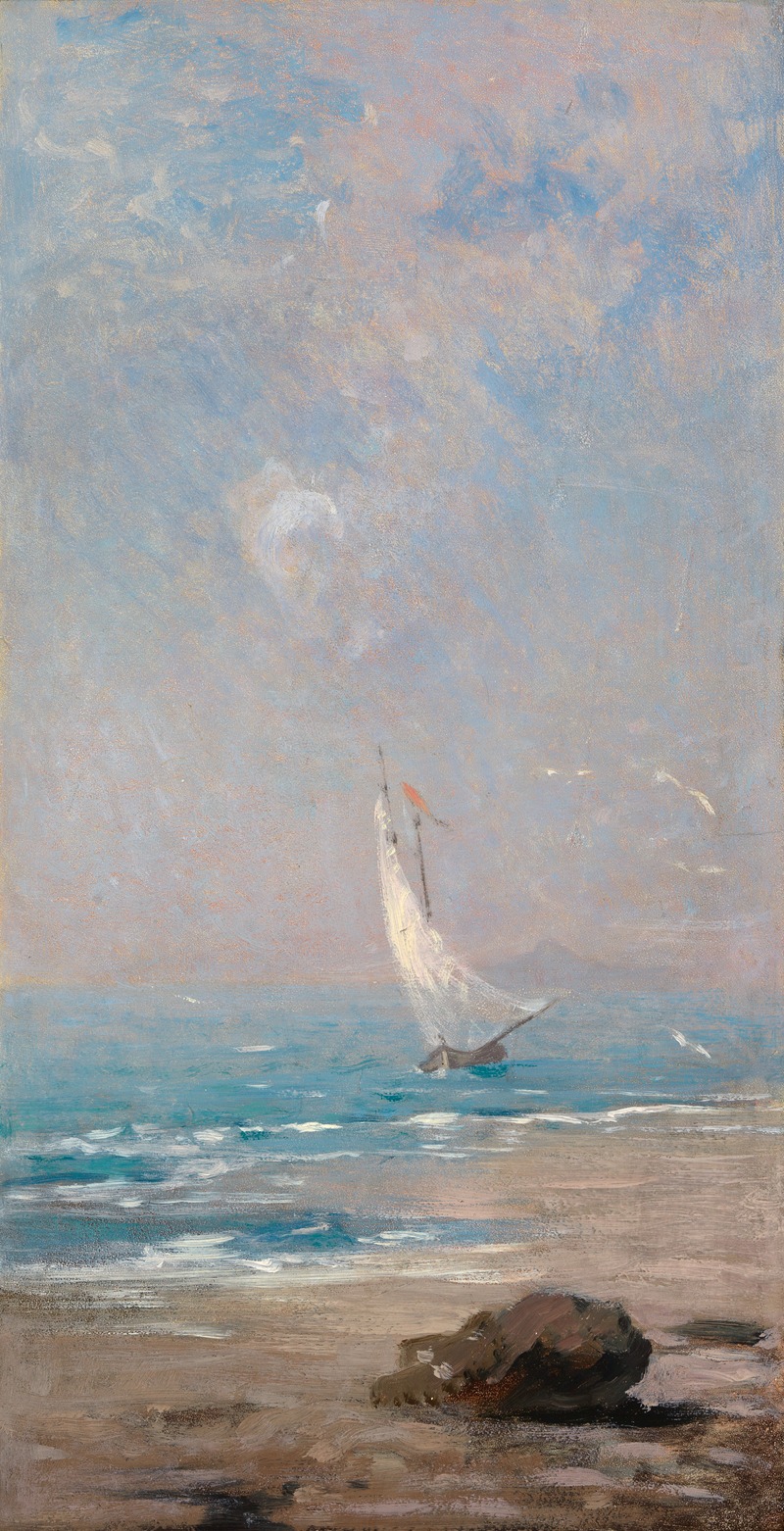
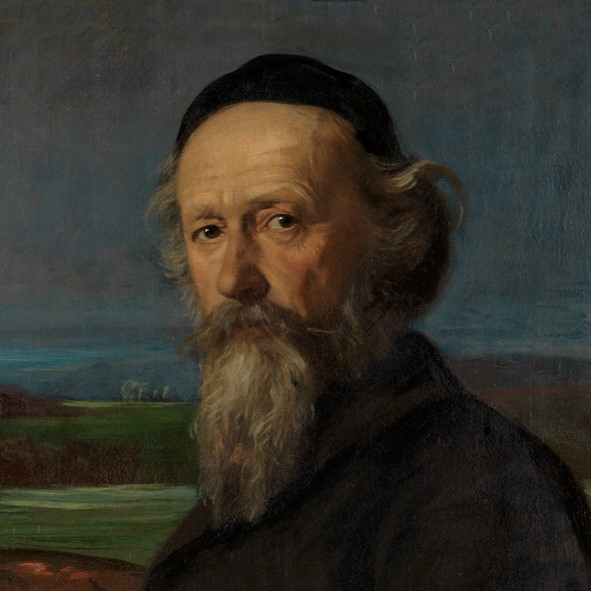
Emil Lugo was a German painter and graphic artist.
The son of the lawyer Karl Alphons Lugo, he began his studies at the age of 16 in 1856 at the Grand Ducal Baden School of Art in Karlsruhe under the first director of this art school, the Düsseldorf landscape painter Johann Wilhelm Schirmer (1807-1863). It was here that he met the painter Hans Thoma, who attended the art school from October 1859 and with whom he would later form a lifelong friendship.
Schirmer died in September 1863 and was succeeded by Hans Fredrik Gude, a pupil of Schirmer's, whose way of working could be one reason for Lugo's departure from the art school. This can be seen in a letter from the painter Julius Uetz (1829-1885) to the Grand Duke dated November 10, 1869, in which Gude is attacked for "suppressing any independent talent that strays from his direction" and thus, among other things, for having already driven Lugo away from the institution. Lugo and Uetz were in correspondence. In 1867, Lugo became a member of the Freiburg fraternity Teutonia as hospes perpetuus.
Lugo went to Dresden in 1869 and then to Weimar, where he met the painter Friedrich Preller the Elder and was deeply influenced by him. From 1871 to 1873, he went to Rome accompanied by Max Wilhelm Roman and repeated the trip in 1876 with his friend Thoma, whom he was able to convince with his travel descriptions, and Fräulein Kappler, a Swiss friend.
From 1875, he settled permanently in Freiburg and explored the surroundings of Freiburg and the Black Forest as a landscape artist. During this time, he met the poet Wilhelm Jensen, who came from northern Germany and was associated with Wilhelm Raabe. Wilhelm Jensen wanted to create a comprehensive description of the Black Forest and was able to recruit Emil Lugo as an illustrator. In addition to 50 illustrations by Lugo, Jensen's work also includes pictures by Wilhelm Hasemann and Max and Victor Roman.
When the Jensen family moved to Munich in 1888, they were accompanied by their friend Emil Lugo and his brother Karl. From 1895, the Jensen family owned a summer residence near Prien am Chiemsee, which Emil Lugo used to explore the Chiemsee region artistically. From 1892 to 1894 and in 1901, he made several more trips to Italy with the Jensens.
Emil Lugo's grave is located on the Fraueninsel in Lake Chiemsee. The majority of his drawings are in the Kupferstichkabinett of the Staatliche Kunsthalle Karlsruhe, which organized a major exhibition of Lugo's works in spring 2003.
